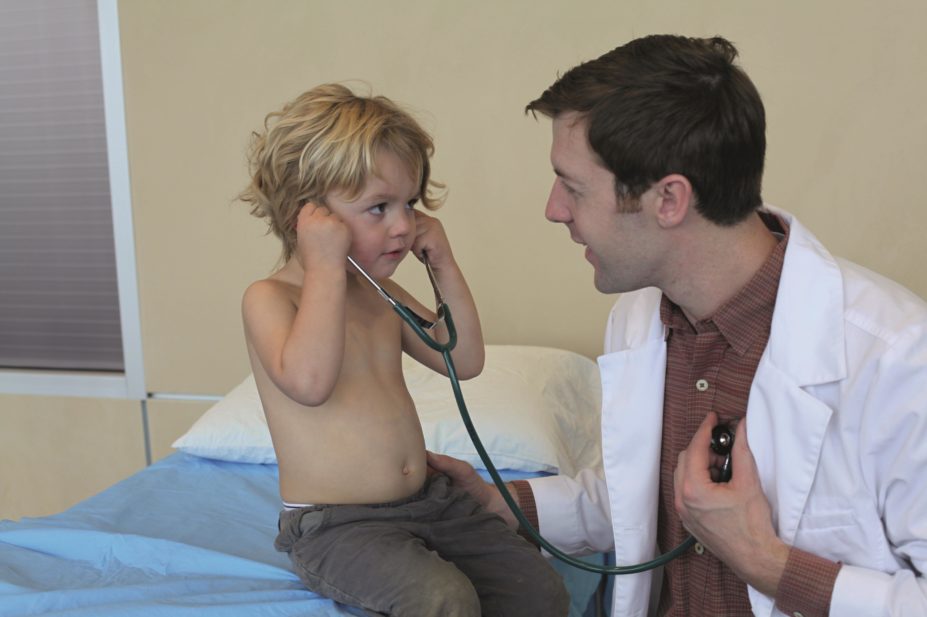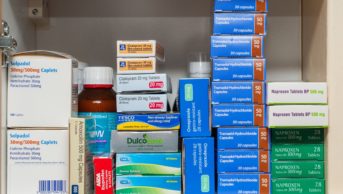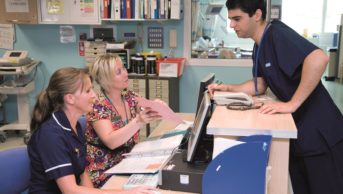
Shutterstock
Medicines information in a third of hospital discharge letters for paediatric patients contained “discrepancies” that were picked up by a pharmacist, according to research published in the International Journal of Pharmacy Practice
[1]
.
Some 22% of the unintended medication discrepancies had the potential to cause “moderate” patient harm, the researchers found.
The team, led by Maisoon Ghaleb, a lecturer at the University of Hertfordshire school of pharmacy, says the study supports the role of pharmacists to routinely check discharge medication letters and carry out medicines reconciliation when children are sent home from hospital.
“Our study suggests that pharmacists’ screening and review of discharge medication letters prevents one in five potentially harmful discrepancies from leaving the hospital,” the researchers say. “This finding provides supporting evidence and justifies the role and routine clinical practice of pharmacists carrying out medicines reconciliation at discharge to keep patients safe.”
The researchers say their prospective study is the first to examine the accuracy of discharge letters in paediatric patients. They looked at electronically generated medication discharge orders written by hospital doctors that were then checked by a pharmacist at a London teaching hospital over five weeks between March and April 2011.
The orders relate to 142 patients aged between 1 month and 18 years and cover 501 medicines. Most of the patients had been under the care of general surgery or general paediatric teams.
A third of the orders contained at least one medication discrepancy that was spotted and rectified by the checking pharmacist.
Of the 99 discrepancies found, 22% had the potential to cause moderate harm; none had the potential to cause serious harm.
Penny North-Lewis, chair of the Neonatal and Paediatric Pharmacists Group (NPPG), says the group “wholeheartedly agrees” with the recommendation that pharmacists, and preferably paediatric-trained pharmacists for paediatric patients, should routinely check discharge orders. “We pick up a lot of mistakes and clarify misleading instructions by doing so,” she says. “It is nice to have this backed up by evidence.”
North-Lewis suspects that it is routine practice in most centres for pharmacists to check the medicines section of discharge letters before any medicines are supplied. “However we do not know how many centres, or what proportion of discharges, bypass pharmacy in their discharge process, for example if medicines can be supplied from the ward or the patient has their own,” she says.
Steve Tomlin, one of the study authors and consultant pharmacist in children’s services at Evelina London Children’s Hospital, says there is a “huge amount of evidence” that pharmacists should be involved in discharge planning and medicines transfer when patients leave hospital.
“Children have many issues making them particularly prone to problems at discharge,” he says.
Such problems include child-friendly formulations not always being available, leading to products having to be manipulated; varying strengths of liquid medicines, resulting in confusion for parents who may not know what volume of medicine to give to their child; use of unlicensed medicines, leading to supply problems, changes in formulations and GPs not feeling competent to prescribe for this age group.
References
[1] Chi Huynh C, Wong ICK, Tomlin S et al. An evaluation of paediatric medicines reconciliation at hospital discharge into the community. International Journal of Pharmacy Practice 2015. doi: 10.1111/ijpp.12229


